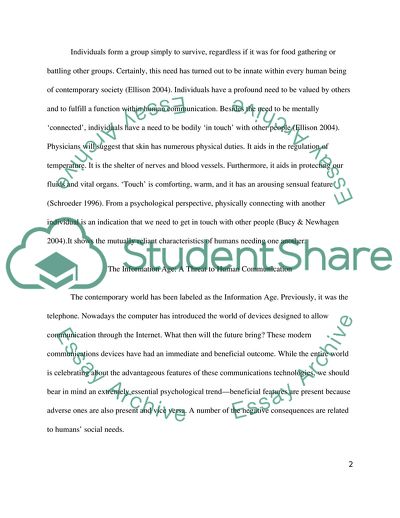Cite this document
(The Status of Social Interaction Essay Example | Topics and Well Written Essays - 1500 words, n.d.)
The Status of Social Interaction Essay Example | Topics and Well Written Essays - 1500 words. https://studentshare.org/journalism-communication/1745287-writing-for-professional-practice-communication
The Status of Social Interaction Essay Example | Topics and Well Written Essays - 1500 words. https://studentshare.org/journalism-communication/1745287-writing-for-professional-practice-communication
(The Status of Social Interaction Essay Example | Topics and Well Written Essays - 1500 Words)
The Status of Social Interaction Essay Example | Topics and Well Written Essays - 1500 Words. https://studentshare.org/journalism-communication/1745287-writing-for-professional-practice-communication.
The Status of Social Interaction Essay Example | Topics and Well Written Essays - 1500 Words. https://studentshare.org/journalism-communication/1745287-writing-for-professional-practice-communication.
“The Status of Social Interaction Essay Example | Topics and Well Written Essays - 1500 Words”. https://studentshare.org/journalism-communication/1745287-writing-for-professional-practice-communication.


